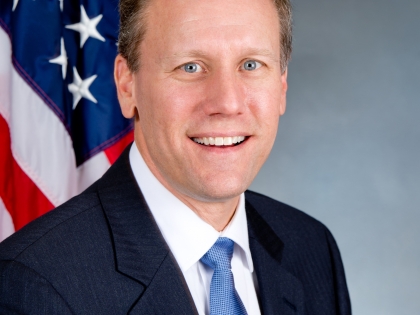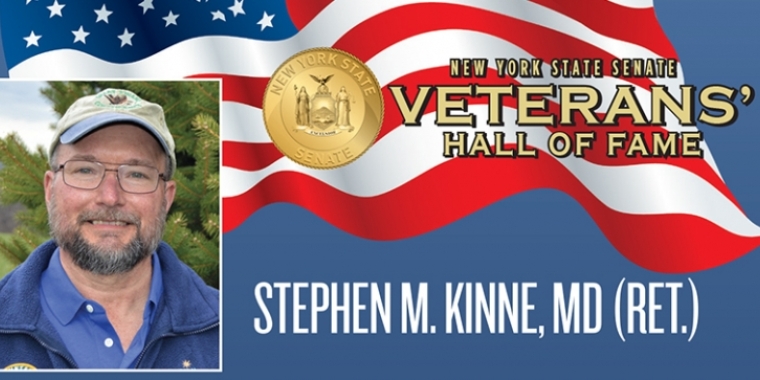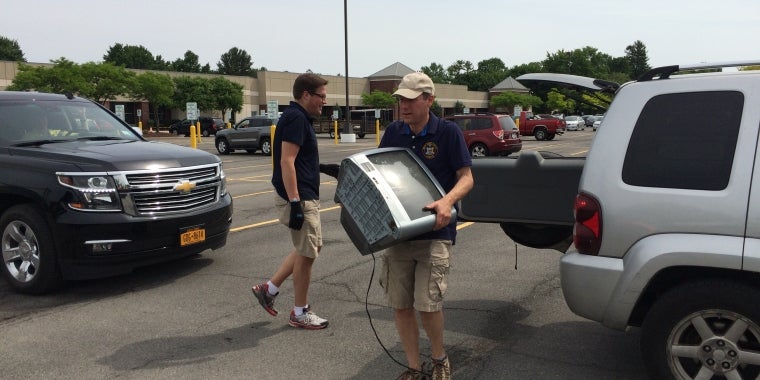
Landmark Economic Development Legislation Sponsored By Senator Valesky Passes State Senate; Historic Rehabilitation Tax Credit is unprecedented redevelopment incentive for Upstate New York
David J. Valesky
May 27, 2009
SYRACUSE, N.Y.—The New York State Senate today passed landmark economic development legislation sponsored by Senator David J. Valesky (D-Oneida) which would stimulate the Upstate economy and revitalize its communities through rehabilitation of historic properties.
The bill, S2960, would provide tax credits for redevelopment of qualified residential and commercial properties with the intention of creating an economic stimulus in distressed communities. There is currently a large inventory of vacant, underutilized and deteriorating historic property, much of which is located in Upstate urban areas.
Economic development experts agree these properties are a significant asset across Upstate New York, and their redevelopment holds the key to attracting new investment, new businesses and new residents to communities.
“The Historic Rehabilitation Tax Credit (HRTC) will provide real incentives to stimulate Main Street and downtown development that will create jobs, increase property values and provide a better quality of life for all Upstate New Yorkers,” Senator Valesky, Vice-President Pro-Tempore of the Senate, said. “This program has great potential to revitalize the Upstate economy and reduce the strain on urban, suburban and rural communities alike.”
The HRTC strengthens the State program first launched in 2006 and will make New York State more competitive against the nearly 30 other states with similar programs which have seen significant economic stimulus as a result, leveraging $3 to $5 dollars for every state dollar invested.
The changes will allow New York State to target reinvestment to distressed communities, as determined by the U.S. Census tract information, and incorporate cost savings to the administration of the program. Because of these changes, New York State will be among the most effective and cost-effective redevelopment programs in the country.
The goal of the program is to provide developers and homeowners with sufficient incentive to rehabilitate properties.
“New projects represent jobs for architects and contractors, and increased income for suppliers. Newly renovated buildings and homes represent an increased tax base, higher property values and a better quality of life for those who live, work, and visit,” Senator Valesky said.
“It’s great news that the Senate has passed the Historic Rehabilitation Tax Credit. Here in Onondaga County and across the state, there are many aging urban cores whose revitalization will be made possible with this program,” Onondaga County Executive Joanie Mahoney said.
“This bill is everything you could ask for in an economic development tool. It provides developers with a fair and predictable stimulus; targets those incentives to distressed communities that need it most; allows the state to leverage more federal resources and does it all by encouraging investment in urban centers and reducing sprawl,” said Robert M. Simpson, president and CEO of the Metropolitan Development Association of Syracuse and Central New York. “We applaud the Senate’s leadership on this important issue. We hope that the Assembly will move quickly to follow suit so that the Governor can sign the bill and put New Yorkers to work rebuilding our main streets and downtowns.”
“Senator Valesky’s leadership has been critical in our efforts to secure an expanded New York State Rehabilitation Tax Credit program that will serve city centers, main streets and older neighborhoods throughout New York State,” said Jay A. DiLorenzo, President of the Preservation League of New York State. “A diverse partnership of municipal officials, economic development groups, and preservation organizations have sought these changes based on the strong belief that this expanded program could represent one of the most effective economic development programs for New York State.”
“Enhancing and encouraging investment opportunities in Upstate, especially in our urban cores, are mission critical to Upstate’s economic turnaround. We recognize the challenging fiscal conditions New York is facing, but these projects will have a proven, measurable net return on investment for our communities and New York State,” Darlene Kerr, President of the Greater Syracuse Chamber of Commerce, said. “This will put many rehabilitated vacant and underutilized buildings back on the tax rolls. Congratulations to Senator Valesky for sponsoring this best practices version of rehabilitation tax credit and leading its passage in the Senate.”
“This bill represents a fiscally prudent and highly targeted investment that will produce transformative results in New York State’s urban cores,” Ben Walsh, Executive Director of the New York State Urban Council, said. “Senator Valesky and his colleagues clearly recognize what our members have been telling us for a long time - our state's historic building stock is among our greatest economic assets.”
Features of the Senate’s legislation include:
- Increasing the cap on commercial credit value from $100,000 to $5 million; the residential credit value will increase from $25,000 to $50,000.
- Limiting the availability of the residential and commercial credit of the program to “distressed” areas, which is defined as being located within a Census tract identified at or below one hundred percent of the median family income.
- Increasing the percent of qualified rehabilitation costs that can be claimed for the credit from 6 percent to 20 percent, allowing for a higher percentage of qualified rehabilitation costs.
- Making the credit assignable, transferable, and conveyable within business partnerships, to allow for greater flexibility on the part of the investor, and attract out-of-state financing to in-state rehabilitation projects.
- Offering the rehabilitation tax credit as a rebate to make the program a stronger financial incentive for homeowners without significant income tax liability.
A companion bill (A6471) was introduced in the Assembly by Assemblyman Sam Hoyt (D-Buffalo, Grand Island).
Senator David Valesky represents the 49th Senate District, and is Vice President Pro-Tempore of the New York State Senate.
##
Share this Article or Press Release
Newsroom
Go to NewsroomSen. Valesky’s Sixth Annual Free Senior Fair is October 19 in Madison County
September 25, 2018
Harmful Algal Blooms: What to Know, How to Report
June 29, 2018

Stephen M. Kinne, MD (Ret.)
May 15, 2018

